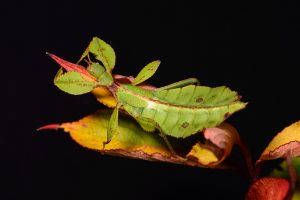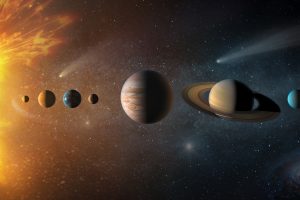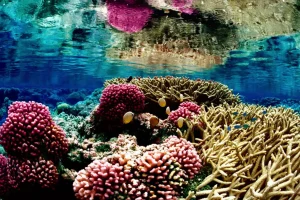
Mubariz Mahmood, Czech Republic & Professor Amtul Razzaq Carmichael, UK
Breathing is the most important function of life that provides oxygen to living beings for various bodily functions. Today, oxygen makes up around 21 percent of Earth’s atmosphere and helps to sustain life from the highest mountains to the deepest recesses of the ocean of the earth. This oxygen-rich atmosphere is ideal for the survival of large and complex organisms, like humans. [1] Simpler forms of life acquire oxygen directly from the atmosphere for the purpose of breathing. More complex organisms require a system to transport oxygen from the environment to their lungs and then from the lungs to the tissues of their bodies.
The whole system of delivery of oxygen to the living tissue is an extremely well-coordinated, structured, and robust process. Allah the Exalted says in the following verses of the Holy Qur’an, ‘In the creation of the heavens and the earth and in the alternation of the night and the day there are indeed Signs for men of understanding; Those who remember Allah while standing, sitting, and lying on their sides, and ponder over the creation of the heavens and the earth: Our Lord, Thou hast not created this in vain; nay, Holy art Thou; save us, then, from the punishment of the Fire.‘ [2]
Pondering over the oxygen-transport system of the living beings, one must wonder if the complexity and coordination required to operate such a system can be the outcome of an unguided natural selection driven by specific selection pressures? Or this degree of precision and coordination commands a Grand Designer, Who has immense Power of Creativity, Vision and Understanding this. [3]
There are many forms of oxygen transport systems in the animal world. For example, Polar animals transport oxygen dissolved in their blood because cold blood can carry more oxygen than warm blood. They do not have oxygen transport molecules, which may clog their blood vessels at extremely low temperatures. Many animals require oxygen-transport molecules, such as haemoglobin, to take oxygen to various tissues of their bodies. In this article, we will mainly focus on one of the molecules of oxygen transport, found in human beings called haemoglobin.
What is Haemoglobin?
Haemoglobin is a red pigment contained within the red blood cells. Haemoglobin was accidentally discovered by Hünefeld in 1840 in a sample of earthworm’s blood. [4] Hoppe-Seyler in 1864 named this substance ‘haemoglobin’ and in 1870, Claude Bernard discovered that the main function of haemoglobin is to transport oxygen from the lungs to various tissues of the body. [5]
The Structure of Haemoglobin
Haemoglobin consists of four protein chains called globin chains, which are attached to Haem, which binds Oxygen. [6] The chemical structure of haemoglobin enables all four chains to carry oxygen, maximising its oxygen transport capacity.
Different Types of Haemoglobin
Adult human haemoglobin is different from foetal haemoglobin. As the foetus must take oxygen from its mother, the haemoglobin of the foetus has a higher affinity for oxygen than the adult; this provides a safe mechanism by which the foetus can acquire adequate oxygen from the mother’s haemoglobin. The foetus has an in-built mechanism to switch the production of haemoglobin from foetal to adult-type to allow breathing immediately after birth. [7] With time, foetal haemoglobin is replaced by adult haemoglobin.
Haemoglobin and Oxygen Binding
The capacity of haemoglobin to bind and release oxygen is different in different animals to meet their functional demands.
- Animals exposed to conditions of extremely low oxygen supply such as the high soaring vultures and migratory ducks and geese have haemoglobin that can retain oxygen even when oxygen in the animal’s tissue is extremely low. In other words, haemoglobin has a high oxygen affinity. [8] This system ensures a steady supply of oxygen even in extreme conditions and these birds do not run out of oxygen amid flight. [9]
- Haemoglobin of metabolically highly active animals such as rodents has low oxygen affinity, therefore it releases oxygen even when the oxygen level in the tissue is high. This enables a ready supply of oxygen to the active tissues of the metabolically highly active rodents.
- Some animals have haemoglobin, which readily gives up oxygen to the tissues when in extreme conditions. For example, the capacity of crocodile’s haemoglobin to retain oxygen is determined by plasma bicarbonate levels. [10] Crocodiles can remain underwater for more than an hour, without needing to surface to breathe. When crocodiles hold their breath underwater, the carbon dioxide increases in their bodies; this leads to a build-up of bicarbonate ions in their blood. At high bicarbonate levels, the haemoglobin of the crocodile releases a large portion of oxygen to the tissues. This helps the crocodiles to have adequate oxygen in their tissues when they stay underwater for a long period of time.
Haemoglobin is not the only oxygen-carrying molecules; there are various types of oxygen-carrying molecules in animals. For example, Octopuses have Hemocyanin. It is a variation of Haemoglobin in which oxygen is carried by copper instead of Iron. Copper can hold an equal number of oxygen atoms, hence allowing the octopus to have a continual supply of oxygen in the extreme environment. [11]
Haemoglobin; Unstructured Evolution or a Masterful Design?
Paul Davies in his book The Goldilocks Enigma suggests the universe seems ‘just right’ for life. [12] Haemoglobin, however studied, demonstrates that its structure, function, and variations, are all designed to facilitate and support life. It serves a specific purpose; a purpose to sustain life. We present the concordance between the oxygen availability, oxygen requirements, and the oxygen-carrying capacity of the organisms as evidence of the existence of a Grand Designer. We contend that the structure and function of haemoglobin is evidence in itself that this cannot be a product of an undirected and unguided process without a prior design. We present the following evidence to support our assertion.
Synthesis of Molecules: A Structured Process
The science of chemical synthesis shows that to design even the simplest form of a molecule would require a large team of experienced scientists. They must possess the intellectual capacity to design the molecule and plan its production. There is not a single incidence in the history of science where useful chemical substances create themselves and evolve to function under a wide variety of conditions. Claude Hathaway, an engineer for National Advisory Committee on Aeronautics, Langley Fields claims that the argument for an Intelligent Designer has been made more powerful by modern science; the more complex the order, the more remote is the possibility of chance. [13] Thus, logic and rationality would suggest that a conscious design and skilled implementation would be required to synthesise the extraordinarily adaptable molecule of haemoglobin. The unguided processes of blind evolution are too rudimentary, amorphous, and unstructured to deliver this highly refined and functional molecule.
Evolution Driven by Selection Pressures: Not Enough Time
It could be argued that haemoglobin evolved under specific selection pressure. Evolution by natural selection is a two steps process, the first step is random as chance events lead to mutations; the second step is governed by natural selection to safeguard the survival of beneficial mutations. The process of the natural section does not create but only works on whatever has already been formed. [14]
Haemoglobin is a protein-based molecule. Frank Allen, professor of biophysics and recipient of Tory Gold Medal, Royal Society of Canada states, ‘The amount of matter to be shaken together to produce a single molecule of protein would be millions of times greater than that in the universe.’ It would take 10243 years to form a single protein molecule, which Allen called, ‘almost endless billions of (10243) years’. [15] Haemoglobin has four protein chains and joining protein molecules into a chain is also a time-dependent process. Professor J.B. Leathes calculated that it would take millions of years i.e., 1048 to form the links in the chains of proteins. Thus, Professor Allen concluded by saying, ‘It is impossible for all these chances to have coincided to build one molecule of protein’. [16]
The odds of forming haemoglobin by chance have been explained by the world-famous biologist, Richard Dawkins, in his book, The Blind Watchmaker. He states that even if all the ingredients to make haemoglobin were placed together, the chance of forming haemoglobin is infinitely small, estimated to be a 1 with 190 noughts after it! [17] This astonishing number was named ‘The Haemoglobin Number’ by Isaac Asimov. [18] But the odds of randomly forming such a complex molecule without placing all the key components together are even smaller. Using Dawkins analogy, it is like trying to open a gigantic combination lock with an almost uncountable number of dials.
The process of natural selection can only become operative after a host of variants are created by progressive or random genetic changes. [19] Professor Edward Luther Kessel, Professor of Biology, University of San Francisco, explains that nothing can be created by natural selection; natural selection merely allows or disallows the survival of the variations in nature. [20] It would appear to be a mathematical impossibility for natural selection to have formed haemoglobin. If unguided, it would take millions of attempts over an exceedingly long period to choose even a single superior characteristic by natural selection. Given that the event of the Big Bang occurred 13.8 billion years ago, and the Earth was formed approximately 4.5 billion years ago, there is insufficient time to create a host of options through innumerable chances to naturally select the haemoglobin molecule without a pre-emptive design. There is simply not enough time for all these possibilities even under selection pressures. This is mindless to keep on rejecting the inevitability of the Hands of a Conscious and Wise Selector, Who would always take the right decision at the right moment. [21]
Evolution Driven by Selection Pressures: No Evidence
When reflecting on the precise and timely functional switch of haemoglobin from foetus to adult-type; a process of undirected, unguided evolution by natural selection cannot explain the sophistication and the timeliness of this process. Such a coordinated process has never been nor can be shaped without a conscious mind. It is an insult to the intellect to keep insisting that this immaculate, complex, and diverse molecule came into being merely by ‘the illusion of design and planning‘. Contrary to Dawkins’ assertions, masterful planning and conscious design is responsible for the formation of haemoglobin; not mere natural selection, which does not have adequate time or an intended purpose.
By using the example of haemoglobin, we challenge the ideology put forward by Victor Stenger that science shows that God does not exist. Science clearly shows that it is a mathematical impossibility to form haemoglobin by mere chance, selection pressures, or unguided evolution. Haemoglobin, if it exists, has been designed and created.
Grand Designer and a Conscious Creator
Haemoglobin has an undisputed purpose; a purpose to support life even in the extremes of conditions. The complexity, coordination, adaptability and flawless existence of the haemoglobin is strong evidence of a Grand Designer, Who is a Conscious Creator, Wise and all Powerful. This is beautifully stated in the Holy Qur’an, ‘Who has created seven heavens in harmony. No incongruity canst thou see in the creation of the Gracious God. Then look again: Seest thou any flaw? Aye, look again, and yet again, thy sight will only return unto thee confused and fatigued’. [22]
About the Authors:
Mubariz Mahmood is a medical student and serving as the Secretary for Education for the Ahmadiyya Muslim Youth Association, Czech Republic and National Secretary for Publications for the Ahmadiyya Muslim Community in Czech Republic.
Professor Amtul Razzaq Carmichael MD, M Ed, FRCS (Gen Surg.), MBBS, is a consultant. She qualified in 1987 with gold medals for academic Excellence and undertook her surgical training at major teaching hospitals in London, Edinburgh and Philadelphia. She has authored many articles for major peer-reviewed scientific journals. She is a senior member of The Review of Religions Editorial Board as well as Assistant Manager.
ENDNOTES
[2] The Holy Qur’an Chapter 3; Verses 191-192
[4] https://pubmed.ncbi.nlm.nih.gov/25431740/)
[5] https://www.ncbi.nlm.nih.gov/pmc/articles/PMC4241286/
[6] https://www.ncbi.nlm.nih.gov/pmc/articles/PMC4241286
[7] https://www.ncbi.nlm.nih.gov/books/NBK500011/
[8] https://www.researchgate.net/publication/305618096_Structural_and_functional_diversity_of_haemoglobin_molecule_properties_amongst_different_classes_and_species_of_animals [accessed Mar 07 2021].
[9] https://www.researchgate.net/publication/305618096_Structural_and_functional_diversity_of_haemoglobin_molecule_properties_amongst_different_classes_and_species_of_animals [accessed Mar 07 2021].
[10] https://pubmed.ncbi.nlm.nih.gov/22046/
[11] https://www.nationalgeographic.com/animals/article/150312-blood-antarctica-octopus-animals-science-colors
[12] Has Science Killed God? The Faraday Papers on Science and Religion By Denis Alexander. Page156
[13] Allen F 1958 The Origin of the World—By Chance or Design? in the Evidence of God in an Expanding Universe. By Monsa JC. Thomas Samuel Publishers. Bombay, p20
[14] https://www.alislam.org/library/books/RRKT.pdf. Page 528
[15] Claude M Hathway 1958 Great Designer? in the Evidence of God in an Expanding Universe. By Monsa JC. Thomas Samuel Publishers. Bombay, p143
[16] Allen F 1958 The Origin of the World—By Chance or Design? in the Evidence of God in an Expanding Universe. By Monsa JC. Thomas Samuel Publishers. Bombay, p20
[17] https://lost-contact.mit.edu/afs/adrake.org/usr/rkh/Books/books/Dawkins/Richard Dawkins – The Blind Watchmaker.txt page 45.
[18] https://evoillusion.org/3091-2/
[19] https://www.alislam.org/library/books/RRKT.pdf. Page 429
[20] Kessel EL 1958 Let’s look at fact, without bent or bias? in the Evidence of God in an Expanding Universe. By Monsa JC. Thomas Samuel Publishers. Bombay, p49
[21] https://www.alislam.org/library/books/RRKT.pdf. Page 431
[22] The Holy Qur’an Chapter 67; Verses 4-5




Add Comment